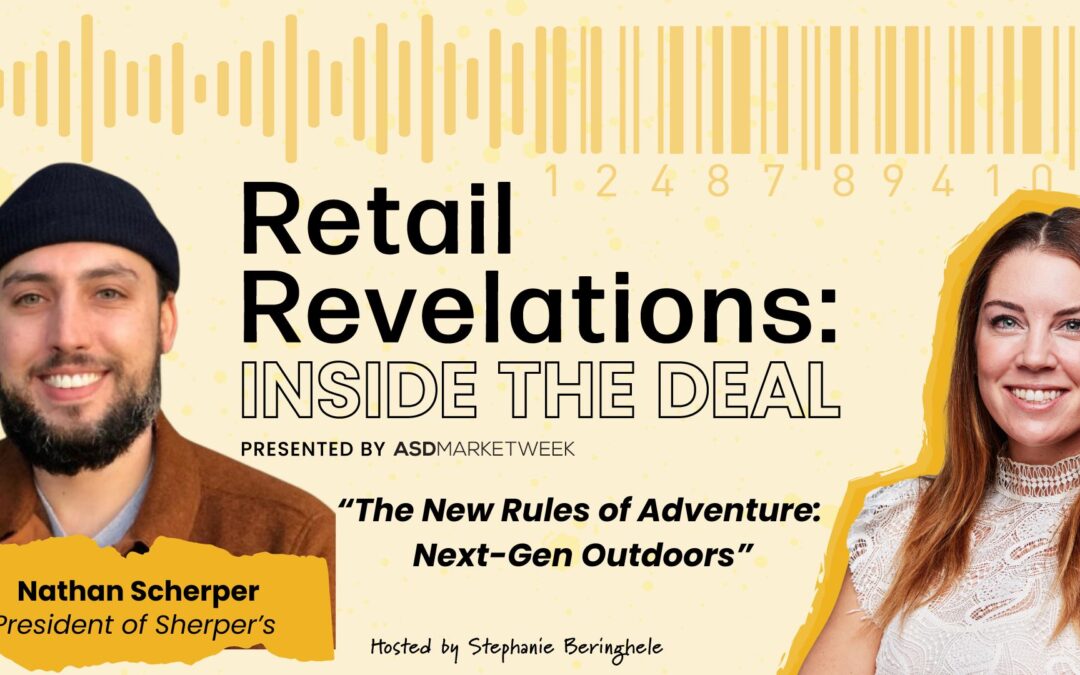Want to build an eight-figure retail business? It all starts with branding. Christine Amerman of The Boutique Training Academy discusses the importance of effective branding for retail businesses. Amerman discusses the significance of clear logos that represent a brand and resonate with the target audience, using examples of successful and confusing logos.
She also encourages business owners to identify their “cloneable clients” by conducting a brand audit and understanding their values and motivations. By focusing on this specific customer group and sharing authentic brand stories, small businesses can attract and retain loyal customers, increase sales, and ultimately grow and scale.
Key Insights
- 0:05: Engaging session on retail business strategies with focus on online presence and social media.
- 4:19: Importance of Clear Logo Design for Representing a Company Effectively
- 8:51: Challenges faced in rebranding a podcast due to a misleading name.
- 13:14: Optimizing marketing strategy, traffic conversion, and branding for retail success.
- 17:47: Understanding psychographics in customer demographics is crucial for retail success.
- 21:29: Importance of aligning brand positioning with brand story and values
- 25:24: Maximize customer retention through establishing trust, congruency, and professional branding in retail business.
Longer Transcript
- :00:00: In this section of the YouTube video titled “Building a $10 Million Dollar Retail Business,” Christine Amerman of The Boutique Training Academy discusses the importance of having a clear and effective branding strategy for retail businesses, both online and offline. She emphasizes the significance of logos and their readability, using examples like the famous Nike “swoosh” logo and the Build-A-Bear logo. Amerman also shares her concerns about logos that are not easily understandable, such as Mimi’s IV Hydration, and advises against hiring young designers who focus more on aesthetics than clarity and understandability. She then presents a few logos for a plus-size boutique, arguing that some of them do not make much sense at first glance. Overall, Christine Amerman encourages business owners to invest time and resources in creating a logo that clearly represents their brand and appeals to their target audience.
- 05:00: In this section of the YouTube video titled “Building a $10 Million Dollar Retail Business” by Christine Amerman of The Boutique Training Academy, the importance of clear branding is emphasized using the example of Snoop Dogg’s Instagram post promoting a smokeless stove, which was misunderstood by his followers due to a mismatch in ideal customer base. The discussion then moves on to other branding disasters, such as Pack Sun and LuLemon, and how small businesses can learn from these mistakes. Christine also shares her personal experience with naming her podcast and the importance of a clear and concise tagline.
- 10:00: Amerman discusses the importance of branding for business success. She explains how aligning all aspects of her business with her brand helped her attract loyal customers and increase revenue. Amerman introduces the 80/20 rule, stating that 80% of business revenue comes from 20% of customers or efforts. She emphasizes the need to identify and focus on these areas to grow and scale. The conversation then shifts to branding for increased traffic to stores and the importance of knowing which platforms generate the most leads. Amerman encourages businesses to provide a consistent brand experience across all channels to make conversions and build customer loyalty.
- 15:00: Amerman discusses the importance of branding in a retail business is emphasized. Amerman explains that branding goes beyond just a logo and encompasses what a business stands for and who it caters to. She encourages business owners to conduct a brand audit if they are experiencing low sales or traffic, and introduces the concept of a “cloneable client.” This refers to identifying the ideal customer demographic and psychographics, and understanding their values and motivations. By focusing on this specific customer group, businesses can tailor their offerings and messaging to attract and retain them, ultimately driving growth.
- 20:00: Amerman emphasizes the importance of identifying and connecting with one’s “clonable clients” – customers who align with one’s brand story and values. She encourages business owners to share their brand stories authentically and position themselves beyond just their logos to attract these clients. Amerman also discusses the concept of the “heck yes test,” which involves asking clonable clients about their shopping experiences and preferences to better understand and cater to their needs. By implementing these strategies, small business owners can create a more congruent brand image and attract customers who are passionate about their offerings.
- 25:00: Amerman discusses the importance of repeat customers and establishing a strong brand to increase sales and customer retention. She explains that these customers, who are already familiar with the store and its offerings, are easier to sell to and more likely to trust the brand. The cost of acquiring a new customer is much higher than retaining an existing one. Amerman also emphasizes the importance of professional branding, especially when sending emails, to increase open rates and establish trust. She encourages viewers to create a reason for customers to open their emails and offers a free brand audit guide to help them improve their brand and ultimately increase sales. The goal is to help businesses stay in business, avoid burnout, and achieve their dreams.








0 Comments